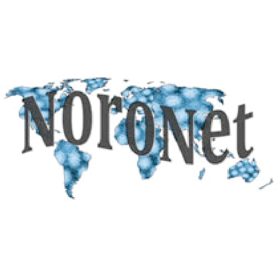About our research group/lab
Our research
Ecology and evolution of emerging viruses at the human animal interface
As the majority of emerging infectious diseases come from spillovers of viruses from an animal reservoir, gaining insight in the ecology of viruses at the interface of humans, animals and ecosystems is key to our ability to detect outbreaks early enough to have potential impact on their course. We currently study ecology and evolution of enzootic flaviviruses that are on the rise in Europe and beyond (Usutu, West Nile), the role of (changes in) global animal production chains in disease emergence (MERS CoV in Arabian peninsula and Sudan), and assess possible animal origins of novel norovirus variants with global distribution. In VEO we develop advanced tools for re-use of data from a wide range of sources and data mining approaches aimed at improving our ability to assess when and where risks of outbreaks are increasing.
Pathogen genomics and genomic epidemiology
The field of pathogen genomics has been revolutionized by the development of second and third generation sequencing methods that allow unprecedented depth and throughput of sequencing of pathogen genomes, metagenomes, and host genomes. In this research line, we explore if, when, and how NGS can be developed and used tostrengthen key research areas across the department, develop bioinformatic workflows for advanced data analysis, and assess opportunities and pitfalls for implementation of NGS in clinical and reference diagnostics. In collaboration with national and international partners (COMPARE/VEO), we study the potential use of (meta)genomic sequencing for outbreak research, surveillance and risk assessment, but also for pathogen and biomarker discovery.
Diagnostic preparedness
The range of (zoonotic and vector-borne) viruses that pose a threat to travelers, or to the resident community is ever expanding and therefore keeping up state-of-the-art reference diagnostics is a constant activity. The forward-looking ecosystem approach to emerging infectious disease research allows translation of key findings into diagnostics that are ready to be deployed when needed, as part of our mandate as national and European reference centre and as WHO collaborating centre. Together with consultants from the clinical virology unit, assays are developed according to a joint priority list, which can rapidly be modified in case of unusual observations from literature or public alerting systems, or findings from the other research lines. This includes innovative fieldable multi-analyte and multi-host serology platforms and NGS based diagnostics or reference assays.
Clinical research preparedness
Evaluations of recent high impact outbreaks (SARS, MERS, influenza H5N1, H7N9, pandemic influenza) have shown that clinical research response typically is lagging far behind, due to barriers to rapid deployment of clinical research protocols. This is particularly problematic in EID, as critical knowledge gaps exist at the start of every outbreak, that need to be addressed to guide interventions. This research line involves the development and laboratory support as central laboratory for targeted observational studies and trials in a Europe wide network (PREPARE/ECRAID) to gain in depth knowledge of etiology, pathogenesis and outcome of severe clinical disease syndromes in Europe on the one hand and develop a trained clinical research network ready to deploy during outbreaks on the other hand. The contribution of our Department currently focusses on severe respiratory disease, sepsis-like illness in infants, and arboviral like disease in the Balkan region.
Our projects
Our team
Principal Investigators
-

Prof. M. (Marion) Koopmans
Professor of Public Health Virology and Scientific Director of the Pandemic & Disaster Preparedness Center
-

T. (Thijs) Kuiken
Professor of Comparative Pathology
-

Dr. B. L. (Bart) Haagmans
Associate Professor
-

Dr. M. (Miranda) de Graaf
Associate professor
-

Dr. B. B. (Bas) Oude Munnink
Assistant Professor
-

Dr. R.S. (Reina) Sikkema
Assistant Professor

